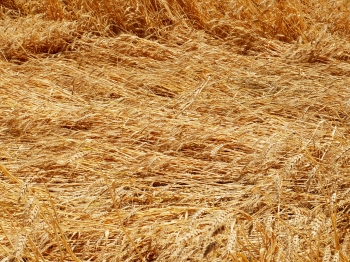Paddock Practices: Increased moisture makes eyespot management vital
Paddock Practices: Increased moisture makes eyespot management vital
Date: 28 May 2020

Key points
- Eyespot infection is most likely to occur in cool and damp conditions
- Yield losses can exceed 30 per cent in susceptible varieties
- Early sown crops are most at risk from yield losses due to eyespot
- Use more resistant cereal varieties, fungicides on susceptible varieties or a break from cereals to manage eyespot
- Visual indications of infection will appear too late for effective fungicide application
- Identifying eyespot risk by PREDICTA® B soil testing before planting is the best aid to management
- Fungicide applied at tillering can give inconsistent control
- Apply fungicide before canopy closure – early stem elongation is recommended
With good opening rains and the Bureau of Meteorology predicting wetter than average conditions through 2020, growers in the medium and high rainfall areas of the southern region need to be especially wary of eyespot infection.
Rainfall and humidity risk factors
Eyespot (Oculimacula yallundae) is a stubble-borne fungal disease that is most prevalent where there are cool and damp conditions early in the growing season.
Eyespot spores develop in temperatures below 20 degrees Celsius when infected stubble becomes wet. Spores are then splashed onto plants by rainfall where they infect the stem base.
Margaret Evans, a senior research scientist with Primary Industries and Regions SA’s research division, the South Australian Research and Development Institute (SARDI), says eyespot infection requires high humidity at the plant base for at least three days.
“The risk is greatest when plants establish early and are subject to rainfall of about three millimetres or more per day for several days during early to mid-tillering,” Dr Evans says.
“Growers with a tight cereal rotation or who are sowing straight into high stubble loads in a high-rainfall area have the greatest risk of eyespot causing yield losses in their paddocks.”
Dense plant growth can also increase humidity at ground level, so narrow row spacings, weeds, high seeding rates and high early nitrogen applications can all increase the risk of eyespot infection.
Yield losses
In recent studies, Dr Evans has found susceptible bread wheat varieties may have yield losses in the range of 19 to 35 per cent (0.6 to 1.3 tonnes per hectare) without lodging.
“The lesion on the plant stem or tiller will cause yield loss by restricting water and nutrient flow,” she says.
“However, larger yield losses occur when lesions cause stem weakening which leads to lodging of the crop.”
Eyespot has a characteristic lodging pattern, with the crop falling in all directions and layering on itself, making harvesting difficult.
Managing eyespot
Dr Evans says control options include planting a cereal variety with some resistance to eyespot – although this is limited in Australian varieties – using fungicides on a susceptible variety, or having a break from cereal to reduce inoculum levels in the soil.
“If levels are particularly high, a double break from cereal may be required to sufficiently reduce the inoculum level,” she says.
As a result of GRDC-supported research, there are now fungicides registered to treat eyespot in-crop in Australia.
Aviator® Xpro® (bixafen + prothioconazole), Soprano® 500 (epoxiconazole) and Elatus® Ace (benzovinidflupyr + propiconazole) are registered to assist in managing eyespot.
The spray boom should be set to target the plant base with a high water rate and lower than normal spraying speed as it is essential the fungicide reaches the base of the stem.
Dr Evans says the recommended time for fungicide application is at early stem elongation, before canopy closure.
However, eyespot symptoms usually will not appear until well into stem elongation.
“Fungicide applied during tillering can be effective, but if there is more rain before canopy closure and after the fungicide has reached the end of its effectiveness, yield losses can still occur,” Dr Evans says.
“A second fungicide application might be considered in these circumstances, but the risk of eyespot and other foliar diseases developing a fungicide resistance must be considered along with the economics.”

Assessing the eyespot risk
Dr Evans says one of the keys to managing eyespot is knowing it is present in the paddock.
“Sending soil samples to the PREDICTA® B analytical service is one of the best ways to establish what levels of inoculum are in a paddock in order to decide what management strategy, if any, should be implemented,” she says.
“Follow the PREDICTA® B paddock sampling protocols, noting that stubble pieces from previous cereal crops – even if the pieces are small – must be included in the sample.”
Another assessment option is to check stems visually in-crop or after harvest.
Growers should pull up stems, targeting those that have lodged, and peel back the leaf sheaths at the base of each stem to check for lesions.
Visual inspections in-crop are best made between head emergence and the end of grain fill.
Later inspections are possible but the eyespot lesions become harder to see as stems lose their colour.
Post-harvest samples should be taken along a wide W-shaped line, collecting five stems from each of 10 sites along the line.
If 10 or more stems carry eyespot lesions, there is a strong risk of yield loss if a susceptible cereal is planted in the following season.
